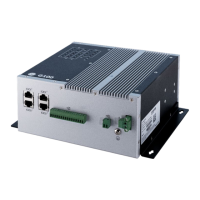20 994-0155-1.00-1 GE Information
Unpacking and
Inspection
This chapter covers the suggested inspection and preparation considerations and background information
necessary prior to using the G100.
Unpacking, initial inspection, and first time operation of the G100 are covered.
Following the procedures given in the chapter is recommended, and they will verify proper operation before the
product is integrated into your system.
Hot Surface: During operation of the G100 the surface of the heat sink,
can reach a temperature of 60°C and above. Therefore, be careful and
do not touch it with bare fingers.
Electro Static Discharge - ESD
The discharge of static electricity, known as Electro Static Discharge or ESD, is a major cause of electronic
component failure. The Industrial Computer has been packed in a static-safe bag which protects it from ESD
while it is in the bag. Before removing the Boards or any other electronic product from its static-safe bag, be
prepared to handle it in a static-safe environment.
You should wear a properly-functioning anti-static strap and ensure you are fully grounded. Any surface upon
which you place on the unprotected G100 should be static- safe, usually facilitated by the use of anti-static mats.
From the time the board is removed from the anti-static bag until it is in the card cage and functioning properly,
extreme care should be taken to avoid “zapping” the board with ESD. You should be aware that you could “zap”
the board without you knowing it; a small discharge, imperceptible to the eye and touch, can often be enough to
damage electronic components. Extra caution should be taken in cold and dry weather when electrostatic
charge easily builds up.
Only after ensuring that both you and the surrounding area are protected from ESD, carefully remove the board
or module from the shipping carton by grasping the module on its edges. Place the board, in its anti-static bag,
flat down on a suitable surface. You may then remove the board from the anti-static bag by tearing the ESD
warning labels.

